Toyota Is the Car Brand That Resonates Most With Women
Thankfully, we’re mostly past the degrading trend of creating smaller, “more appropriate” products for women, but companies are still incredibly interested in how they buy and perceive products. S&P Global Mobility recently conducted a study to find which car brands resonate most with women, finding that Buick and Toyota ranked highest.
Automakers Are Drastically Underreporting Average Emissions: Report
Dieselgate slashed a gaping hole in the assumption that automakers were genuinely invested in building more efficient cars, but it’s hardly the only flimflammery going on behind the scenes. A recent report from Transport and Environment, a European NGO pushing for cleaner transport, found that many automakers are underreporting global emissions by as much as 115 percent.
Fuel Prices Are Allegedly Cooling Off
With the last several months delivering record-breaking fuel prices, as society endures what has undoubtedly been the largest spike in energy cost and inflation since the 1970s, everyone has been hoping to catch a break this summer. Some have even gotten theirs. While things are still looking exceptionally bleak in the long term, the United States appears to be enjoying a modest reprieve.
J.D. Power Claims Vehicles Are Becoming Less Reliable
J.D. Power has released its U.S. Initial Quality Study for 2022 and the prognosis could be better. Automobiles are reportedly becoming less reliable and more expensive. While there are certainly valid reasons for this — ongoing supply chain problems, companies transitioning to novel electric powertrains, and remote working environments making it hard to collaborate on engineering — the bottom line is that the whole industry is blowing it.
Study Claims Gen Z Doesn't Like Buying Cars
Younger drivers have reportedly had it with the dealership experience, with Gen Z even more disenfranchised than Millennials. Though it’s difficult to imagine anybody visiting a showroom within the last 12 months having any other reaction. Incentives are down, prices are up, and there’s a good chance whatever you wanted to buy isn’t going to be on the lot anyway. Someone saying they had an exemplary dealer experience is becoming about as common as people claiming they enjoy going to the DMV.
However, CDK Global Inc. still opted to conduct a survey in the hopes of determining just how much less tolerant younger shoppers might be compared to older generations. The takeaway probably isn’t going to shock you, even if the sheer volume of first-time buyers that don’t care for dealerships might.
Report: 50 Million U.S. Cars Still Subject to Recalls
The latest data from Carfax has indicated that roughly 50 million U.S. vehicles presumed to still be in operation still have outstanding recalls that have yet to be addressed. Though the good news is that this represents a 6 percent decline from 2021 and a meaningful 19 percent drop against 2017.
Still, the metrics may not be wholly down to better communication on the part of the manufacturer and people taking recall notices more seriously. Between 2013 and 2015, the average number of U.S. vehicles and equipment subjected to recalls per year went from 26.3 million to 83.6 million. While the annual averages have come back down since, recalls have remained substantially higher than in decades past.
Study Claims EV Charging Reliability Is a Problem
Researchers with the University of California, Berkeley, are pouring cold water of the premise that electric vehicle charging stations will require less maintenance than traditional fueling solutions. The study, which examined 657 individual connectors between 181 public fast-charging stations in the San Francisco Bay area found that about 23 percent were nonfunctional.
That seems quite a bit higher than the number of fuel pumps that might be down at any given station, though the pertinent question is why those EV charging points were inoperable.
Report: U.S. Automotive Market in Rough Shape
The U.S. light-vehicle market doesn’t appear to be in the best health. While many automakers now opt against issuing monthly sales reports, those that still do are posting some pretty brutal numbers.
This does not bode well for an industry that seemed pretty certain that 2022 would be its recovery year. However, it is on-brand with the slew of announcements made by manufacturers warning about supply constraints and an inability to manufacture at scale. There has also been a growing sense that some consumers may be shunning vehicles that have spent the last several months trading well above what seems rational. Wholesale pricing actually declined by roughly 6 percent since the January record. Though you may not see that represented on dealer lots or even have noticed if it was because last month still saw transactions averaging 14 percent higher than they were last year.
How Shanghai Lockdowns Are Changing the Auto Industry
While the semiconductor shortage was long considered the excuse par excellence for why the automotive sector couldn’t produce enough vehicles during the pandemic, some manufacturers have begun pivoting to blaming supply chains that have been stymied by Chinese lockdowns. Toyota is probably the best-known example. But the matter is hardly limited to a singular automaker and market analysts have already been sounding the alarm bell that strict COVID-19 restrictions in Asia will effectively guarantee prolonged industrial hardship around the globe.
Back in April, Shenzhen was emerging from a month-long lockdown. However, the resulting downtime severely diminished the tech hub’s output which exacerbated global component shortages. While Chinese state-run media claimed regional factories maintained full-scale production during the period, the reality was quite a bit different. Meanwhile, Shanghai has remained under harsh restrictions since March and more look to be on the horizon. As an important industrial center and the world’s busiest port by far, the situation has created an intense backlog of container ships that are presumed to create some of the sustained problems that we’re about to explore.
Survey Suggests Americans Still Doubt EVs [UPDATED]
While plug-in vehicles are catching on in Europe, representing 21 percent of all new registrations in the first quarter of 2022, they’ve been less popular in the United States. Only about 5.2 percent of American registrations were of the plug-in variety (representing hybrid and purely electric vehicles) during the same timeframe. Despite the industry spending billions to develop and market these vehicles, with some progress being made, the overall take rate within North America remains underwhelming.
Ardent fans of battery based powertrains will undoubtedly disagree. But a couple of studies came out this month that drove the point home. Autolist’s Annual Electric Survey dropped earlier this month, effectively outlining why EVs haven’t been able to make more headway in the states.
Average Age of U.S. Light Vehicles Older Than Ever
S&P Global Mobility has reported that the average U.S. automobile is now 12.2 years old, which it said represented a 2 percent increase since 2021. While relatively modest, the general trend for the last five years has been for vehicles to get older as drivers attempted to milk more life from beleaguered hardware.
Much of this has been attributed to North America’s broadening wealth gap and general improvements in vehicle longevity. If you look back at Department of Transportation data from the 1990s, the average age of a car was under nine years. By 2007, the typical car would see its 10th birthday before scrappage and the number has continued to climb from there. Much of that is due to households having to make do with tighter budgets, which was arguably made easier by modern powertrains that can easily exceed 100,000 miles before needing any serious maintenance.
Why Are Traffic Deaths Increasing While People Are Driving Less?
The latest data from the National Highway Traffic Safety Administration (NHTSA) is confirming what local agencies have already been suggesting. Last year represented another sizable increase in U.S. roadway fatalities, pitching up by 10.5 percent over the elevated death rate witnessed in 2020. The agency has estimated that 42,915 people were killed in 2021, whereas 2020 resulted in 38,824 fatalities — a 7.1-percent increase over the declines seen in 2019. While the current situation is not nearly as bad as the rates witnessed during the 1970s, this still represents the highest per capita fatalities in sixteen years and everyone is trying to get a handle on why.
Traffic deaths have been on the rise since the start of the pandemic, confusing everyone who counts crashes because the supporting data also shows that there was a lot less driving being done during the period. Historically, years where people are disinclined from hitting the road due to a beleaguered economy tend to represent far fewer traffic-related fatalities. We can see this happening in 1942 when the U.S. braced itself to enter World War II by rationing everything from fuel to rubber. Another glaring example takes place in 1932, as the nation reached the darkest point in the Great Depression. In fact, there are very few examples of per capita improvements in on-road deaths from the pre-war period, and those that do exist coincide directly with economic recession.
Toyota to Study Advanced Driving System Interactions
Toyota will be launching nine new studies over the next five years to improve automotive safety, specifically in relation to how drivers engage with advanced driving aids equipped to modern vehicles. While the press release to a back seat to the automaker receiving an award for hiring female engineers and a $400,000 donation to the National Environmental Education Foundation, it’s likely to have broader ramifications on the industry.
Despite launching a bevy of new assistance features over the past few years, manufacturers haven’t actually spent all that much time studying how they might impact the act of driving. Testing usually focuses on ensuring the system functions, with independent research being left to examine how electronic helpers might influence behavior from behind the wheel. Unfortunately, preliminary studies have suggested that they lull motorists into a false sense of security, potentially offsetting any legitimate safety advantages the relevant technologies provide.
IIHS Study Suggests Buyers of Used Vehicles Learn Less About Their Car
The Insurance Institute for Highway Safety (IIHS) is claiming that individuals shopping for a secondhand automobile end up learning less about the modern features lurking within their automobiles. Considering salespeople have meetings about how best to hype the advanced driving aids in new models, this one really shouldn’t have required a survey for the IIHS to piece it together. But the outlet appears to be attempting to link this alleged lack of knowledge to make claims that it’ll somehow contribute to the probably of used vehicles being involved in a crash.
“Used car buyers were substantially less likely than new car buyers to know about the advanced driver assistance features present on their vehicles,” stated IIHS Senior Research Scientist Ian Reagan, the author of the study. “They were also less likely to be able to describe how those features work, and they had less trust in them. That could translate into less frequent use, causing crash reductions from these systems to wane.”
Where Are People Waiting the Longest to Buy a New Car?
Nobody should envy car shoppers right now. With production shortages ongoing, there’s never anything you want on the lot, and what is there is likely to be grotesquely overpriced.
This has encouraged consumers to wait longer before replacing their current ride, which is statistically likely to be far older than years past. But not everyone has the same level of patience or financial wellbeing, meaning certain parts of the country are seeing longer intervals between cars than others. There are also regional inventory disparities to account for, encouraging analytics firm Growth from Knowledge (GfK) to conduct an investigation into which parts of the United States are waiting for the longest to procure a new automobile.
AAA Endorses Driver-Monitoring Camera Systems
Despite the automotive industry collectively promising to commence deliveries of self-driving cars in 2019, autonomous vehicles have remained test platforms for technologies that don’t yet seem ready for mass consumption. Public perception of the concept has also endured a few setbacks after several fatalities involving partially autonomous vehicles received national media attention. Today, the relevant technologies have failed to mature as swiftly as indicated and there are a whole host of legal ramifications to contend with.
Selling an automobile that’s marketed as being able to drive itself (even partially) are exposing automakers to a whole new demographic of lawsuits, so they’re desperate to install failsafe measures that places the onus of responsibility back onto the driver. Their current favorite is driver-monitoring cameras, which the American Automobile Association (AAA) likewise believes are probably the best solution. The outlet recently shared the results of a study attempting to determine which driver-engagement systems worked best and decided that in-cabin cameras were the leading choice in a batch of bad options.
Survey: Which EVs Are Leaving Drivers the Most Satisfied?
With electric vehicles getting a lot of press, you might be wondering which models are scratching consumers in all the right places.
According to J.D. Power’s U.S. Electric Vehicle Experience Ownership Study, the Kia Niro EV is the best thing the mainstream BEV market currently has to offer. The Korean model garnered a satisfaction rating of 744 points out of a possible 1,000. However, it wasn’t the top dog overall. That honor fell to the Tesla Model 3, which achieved a score of 777 points — besting the industry average for premium electrics by a whole seven points.
Are Electric or Combustion Cars Better at Weathering a Winter Storm?
Following the Virginia shutdown of Interstate 95 that left countless people stranded in freezing weather overnight earlier this month, there was a surprising amount of news coverage making offhand comments about how victims would have been better off if they all were driving electric vehicles (Ed. note — there was also this Washington Post op-ed in which the author worried that an EV would be a poor vehicle to be stranded in And this Vice rebuttal to that article). While it seemed an inopportune time to advertise for EVs, it’s an interesting premise and encouraged Car and Driver to conduct a head-to-head experiment between a Tesla Model 3 and Hyundai Sonata N-Line to see who could keep the cabin warm for the longest period of time when stranded.
Realistically, you’d be better off in whatever vehicle is yielding the heaviest fuel tank or least-depleted battery when traffic stops. But there are other factors to consider. Idling an internal-combustion car for extended periods of time is not recommended and doing so when totally snowed in could potentially trap harmful exhaust gasses if the exhaust is not kept clear. Meanwhile, EVs are notorious for having their battery chemistry altered by colder temperatures. This is especially true if they lack the relevant thermal management systems, resulting in the maximum range being diminished by as much as 30 percent.
IIHS Takes a Dump on Semi-Autonomous Cars, Then Impositions Drivers
The Insurance Institute for Highway Safety (IIHS) has said it is developing a new rating system to evaluate the existing safeguards found inside vehicles equipped with partial automation. Considering how commonplace advanced driving aids have become, you might be thinking this was long overdue. However, insurers were blindly praising advanced driving suites a few years ago — until they actually started testing them in earnest.
As luck would have it, there’s been mounting research supporting claims modern automotive tech encourages drivers to tune out and become distracted. While this wouldn’t be a big deal if the relevant features all functioned perfectly, the reality is that most are far less effective than advertised and practically all of them run the risk of being completely undone by inclement weather or poor lighting. Confusingly, the IIHS believes the best solution here is to make sure systems constantly monitor the driver to ensure the driver is constantly monitoring the system.
Um, What? Survey Claims People Happier With Modern Car Buying Experience
A new survey from Cox Automotive is suggesting that people are relatively pleased with their trips to the dealership these days — at least compared to the last few years. According to the team that’s been crunching the numbers over at Automotive News, “Buyer satisfaction with the shopping experience from the research stage through delivery dipped to 66 percent in 2021.” Back in 2020, respondents claimed they were happy 72 percent of the time. But in 2019 Cox was only getting 60 percent of shoppers to say they had an okay time buying a vehicle.
The uptick in 2020 is obvious. Showrooms were devoid of customers, production shortfalls hadn’t yet become the norm, and dealers were selling just about everything at a discount — keeping prices low until 2021 sent them into the stratosphere. However, the outlet still framed it as a win against 2019, suggesting that consumers are more satisfied with their shopping experience than before the pandemic. It also claimed that people who purchased vehicles online, the no-haggle alternative to going to a dealership to argue in a small room, tended to be happier overall.
Used Vehicle Prices Are Still Totally Insane
If you’re in the market for a new vehicle, you’ve likely noticed that some of the models you were interested in aren’t available in your preferred format and happen to be accompanied by sizable dealer markups. Well the used market, formerly a refuge for those seeking a bargain and a shrewd way of dodging the steepest period of deprecation, isn’t doing much better.
According to Black Book, the typical transaction price for used vehicles has gone up by over $500 in less than a month. Pegged at $27,000 in November, the average secondhand car now trades for over $27,500. As we’ve recently covered just how wild secondhand vehicle prices have become in 2021, we’ll keep this one relatively brief. But it must be said that automotive values are starting to seem totally disconnected from anything that could be considered rational as cars now have MSRPs a third higher than they were at the start of 2021.
Study Shows Auto Dealer Sentiment Still Ridiculously Positive
Car dealers have been polled for the fourth-quarter Cox Automotive Dealer Sentiment Index (CADSI) and they’re still incredibly optimistic, despite losing some of their earlier confidence that new-vehicle sales would be relatively healthy.
The dealer optimism – especially among franchised entities – seems to be wholly tied to profitability here. New vehicle sales dropped in 2019 and absolutely cratered in 2020 due to the nation’s response to the pandemic. In spite of there being plenty of talking heads in the news media telling you not to stress about the economy, inflation has created pricing increases across the board and automobiles are at the tippy top of that list. With inventories remaining relatively lean due to production slowdowns, staggering dealer markups have become the norm. Basically, stores just seem happy that they can charge more per car while they’re in short supply. But they’re also starting to have concerns about the long-term viability of the market and are are feeling the pinch of rising operating costs.
Study Suggests Time Plays Important Factor in Repair Costs for EVs Vs ICEs
Since the hottest news surrounding the automotive industry today happens to be rolling updates about supply shortages, factory downtime, and how it’s not impacting manufacturing profits as much as anticipated, I’ve been diving back into studies and research pertaining to the future of the automotive industry. It’s a little more enjoyable for my own gray matter to process and might provide readers with a touch more to ponder than another story about how automakers are stalling production because an insufficient number of doodads were placed on a boat that’s waiting off the California coastline.
Earlier this week, we examined research exploring how much electric vehicles actually cost to run and that theme will persist. There’s a new study suggesting EVs boast lower repair bills than gasoline-driven alternatives. But there’s an interesting tipping point that occurs early in a vehicle’s lifespan that makes it happen. Before that, it’s cheaper on average to maintain something equipped with an internal combustion engine.
Study: Automotive Debt Is Out of Control, You're Being Swindled
Consumer Reports just released the findings of a year-long stud y looking into the latest trends in automotive loans and car payments. The resulting information highlights just how explosive the debt growth has been over the last 10 years and the arbitrary way in which borrowers are now being treated.
Long story short, we’re all being swindled.
With vehicle prices ballooning and the associated loans becoming longer than ever, dealers and lenders seem to be operating whatever way yields the steepest profit margins with only a modicum of consideration being given to the established frameworks designed to act as a guard rail. This has led to U.S. citizens carrying around a record $1.37 trillion in automotive load debt and customers with good credit being treated no different than those that fall into the subprime category. Sadly, the issue appears only appears to be worsening as new economic perils are only making things more expensive. Meanwhile, data from the Federal Reserve Bank of New York is projecting national auto debt to swell to $1.42 trillion by year’s end.
Study: Do EVs Really Cost Less to Run Than Internal Combustion Cars?
With the volume having been turned down on just about every business sector imaginable, automakers have spent most of this year explaining how supply chain shortages are impacting production and making promises about electric vehicles. However, the rhetoric surrounding electrification has gotten so aggressive that it’s fast becoming another contentious issue, leading to vicious arguments as people square up to take sides. Part of this is due to the enterprising way in which zero-emission vehicles are being marketed and subsequently embraced by world leaders that don’t know jack about the manufacturing or the environment. Much of the discourse surrounding electrification (pro or con) lacks nuance and leads to businesses promising whatever they can in an effort to obtain your unquestioning belief.
For example, EVs are frequently promoted as boasting substantially lower operating costs due to there being no reliance on liquid fuel. Though finding the truth actually requires one to make a comparative analysis while taking into account how, where, and what you’re driving. There’s even a new study out from the Anderson Economic Group (AEG) attempting to determine the true savings of swapping to an EV where the researchers ultimately decided gasoline-powered cars were actually easier on the wallet. However, that likewise requires loads of clarifying context and conditional factors.
Auto Theft Becomes Fashionable Again, Most Stolen Vehicles of 2020
Car theft has been trending downward over the last couple of years. According to data from the Insurance Information Institute, 2019 represented a 4-percent decline in thefts across the United States vs the previous annum. But things look even better when you zoom out. The Federal Bureau of Investigation estimates that automotive transgressions have fallen by 64 percent since 1993, mimicking the general trajectory of property and violent crimes within that timeframe.
Unfortunately, crime is back on the rise and vehicle theft is coming along for the ride. Let’s explore the how and why before determining if your personal ride happens to be a preferred target. Then we’ll get into what you can do about it because the latest statistics are pretty disheartening.
Rain or Shine: AAA Finds Out Advanced Driving Aids Still Suck
A new study from the American Automobile Association (AAA) has found that rain can severely impair advanced driver-assistance systems (ADAS). Similar to how highway traffic slows to a crawl when there’s a sudden deluge, modern safety equipment can have real trouble performing when a drizzle becomes a downpour.
On Thursday, the motor club organization released findings from closed-course testing that appeared to indicate some assistance suites had real trouble seeing through bad weather. AAA reported that 33 percent of test vehicles equipped with automatic emergency braking traveling collided with a stopped car when exposed to simulated rainfall at 35 mph. The numbers for automatic lane-keeping was worse, with 69 percent drifting outside the lines. Considering the number of times the people writing for this website have anecdotally criticized ADAS for misbehaving in snow, sleet, rain, fog, or just from an automobile being a little too dirty, it’s hard not to feel a little vindicated.
'Made in America Auto Index' Gives Ford Mustang GT the Crown
Annual automotive-content indexes have grown in popularity since trade restrictions and tariffs have become increasingly relevant issues. But they’re usually pretty generic, often providing the broad strokes of product origin while placing a few cars housing the most regional content on a pedestal. Not so with the Kogod School of Business’ 2021 Made in America Auto Index. While the metrics used are a little different from what’s found elsewhere, it offers a more comprehensive data set than other catalogs.
Though most people still like to know which vehicles were dubbed the “most American” and Kogod’s percentage-based scoring system makes it pretty easy to figure out. We won’t leave you hanging. For the 2021 model year, the Ford Mustang GT was evaluated as the car boasting the highest level of North American hardware and labor. But you have to get a manual transmission for the necessary 88.5 percent total domestic content rating (TDC). Select the automatic and that number drops to 51 percent, which is still better than the Mustang Mach-E’s paltry 15-percent score.
Captain Obvious Returns: Studies Say Ride-Hailing Apps Cause Pollution
As luck would have it, hiring thousands of drivers to cruise around a city in search of their next fare has some negative environmental impacts. That’s the word coming from expert researchers at Carnegie Mellon University, who we can only hope are prepared to tackle similarly impossible quandaries — like establishing what happens to an object when it’s dropped or reaching a final determination on the wetness of water.
The study is inextricably linked to one we covered in 2018 asserting that ride-hailing services actually created more traffic congestion because it treads extremely familiar ground and seems like something that we should have already figured out on our own. But it’s also at odds with the years of messaging we’ve gotten from technology firms that have promised on-demand services (like Uber or Lyft) would usher in a new era of urban transportation striving for clearer roads and cleaner air. Based on little more than the conjecture of executives, we’ve generally accepted ride-hailing as “greener” than the alternatives and it’s well past time that we started actually thinking about it.
Study: Average Annual Vehicle Ownership Cost Nearly $10,000
The average cost of owning a vehicle is now $9,666 per year, according to the American Automobile Association (AAA). While the sum is up substantially over the 2019 average of $9,282, 2020 was sitting at a much tighter $9,561.
Of course, none of this means anything to you unless you happen to drive the most typical vehicle in the most likely manner imaginable. The problem with coming up with a representative figure is that it doesn’t actually represent any one driver or automobile. But AAA was good enough to provide some basic calculation tools to help determine where you fall on the spectrum and some pointers on how to bring those rates down. Though the biggest factor remains which hunk of metal happens to be occupying your driveway.
Study Suggests EVs Cost More to Service
One of the reasons electric vehicles have been so polarizing is down to the near-constant proclamations that they’re the superior mode of transportation. But truth is usually a mixed bag and spending some time with EVs has shown them to have some serious blind spots that will need to be addressed if they’re ever to supplant internal combustion vehicles. Electrics aren’t always the better option, though they do boast features that make them extra desirable to some.
Among those was the promise that owning an EV yielded lower maintenance costs. But there’s a new study out claiming that’s not entirely true. Data is pointing to electrics actually having average servicing fees higher than traditional automobiles.
How Long Are Vehicle Prices Going To Remain Insane?
With just about every resource trading at unappealing premiums, now may not be the time to make any major purchases unless you’re a financial masochist or so wealthy that the normal rules of living no longer apply. But it remains a seller’s market for just about everyone, including the plebian masses. Giant, unaccountable financial institutions will happily purchase your home and there’s a sea of disenfranchised people who will give you their last dollar if you can help them make sense of an increasingly hectic world. In the automotive sphere, we’ve seen dealerships and rental agencies hungrily scooping up secondhand automobiles for unheard-of prices just so they’ll have something on the lot.
The end result is a lot of overpriced merchandise that larger businesses are desperate to buy so they can pass on their elevated expenses to the customer. We’ve already covered the stupidly high prices surveyed consumers claimed they’d be willing to spend on a new vehicle. But there have been numerous reports claiming those days are coming to an end, with just as many suggesting we’re still in the thick of it. Yours truly has been wondering just how close to reality those assertions happen to be.
IIHS Claims Marijuana Legalization Causes Crashes
It’s always nice to get a break from the endless stream of industry marketing materials about electrification, though this week’s impromptu theme still involves going green. Following news that General Motors is considering changing its drug testing policies to exclude marijuana, there has been heavy coverage of an Insurance Institute for Highway Safety (IIHS) study claiming states that have legalized recreational use of cannabis are seeing more crashes.
But the framing seems wildly irresponsible as it fails to highlight the problem being heavily tied to individuals operating a vehicle under the influence of marijuana and alcohol combined. It’s more or less what the IIHS attempted to do in 2018 with help from the Highway Loss Data Institute (HLDI). Our guess is that the duo is seeking out fresh reasons for insurance companies to raise rates in regions that have legalized pot because even their own research complicates the issue.
Pedestrian Deaths Ballooned Against Miles Driven Last Year
The Governors Highway Safety Association (GHSA) released the latest data pertaining to U.S. pedestrian fatalities — indicating that the largest-ever annual increase since we started keeping track in 1975. While the data is preliminary, the association estimated there were 6,721 pedestrian deaths in 2020. It’s a 4.8 percent increase over 2019 and not all that impressive until you realize most people basically gave up their normal driving routine during lockdowns. According to the GHSA, adjusting for miles driven actually results in an annual increase of 21 percent.
It’s genuinely creepy and kind of perplexing with everyone staying isolated. But we’re not going to recommend you start wearing high visibility jackets whenever you leave your home because the mathematical likelihood of being crushed by an automobile remains incredibly low.
Report: People Willing to Pay Stupid Prices for New Cars
While we’d like to get away from stories about everything becoming more expensive, everything actually is becoming more expensive and it looks like a healthy slice of the population is allegedly willing to go along with it. According to the latest data coming from Cox Automotive, roughly 40 percent of the U.S. population would purchase a vehicle at 12 percent above sticker. There’s always been a subset of shoppers who don’t know when they’re being taken but this represents a healthy share of the country.
It makes one wonder where these surveys were being conducted until Cox summarized the situation as the direct result of a populace beaten down by their environment. Apparently, people no longer expect to find good deals and have not yet reached the point where they’ll feel comfortable driving around in the same busted crate that’s seen them through the last decade as a way to save money.
Report: The Government Is Already Using Connected Cars to Spy on You
A recent report from The Intercept has confirmed some of our biggest fears about connected vehicles. Apparently, U.S. Customs And Border Protection (CBP) has struck a deal with Swedish mobile forensics and data extraction firm MSAB for hardware that allows the government to not only siphon up vehicle data but also use it as a backdoor to access the information on your phone.
While this shouldn’t be all that surprising in an America that’s seen the Patriot Act pave the way for all sorts of government spying, the arrangement represents another item in a toolbox that’s frequently used against regular citizens. CBP is alleged to have spent $456,073 on a series of vehicle forensic kits manufactured inside the United States by Berla. Internal documents suggest that the system was unique and of great interest to the U.S. government, with a multitude of potential applications pertaining to automotive data. But what surprised us was just how much information carmakers thought their products needed to keep tabs on and how that plays into this.
Hindenburg Research Report Lambasts Lordstown Motors, Fabricated Orders
Hindenburg Research, the firm that outed Nikola for overselling its technology in last year’s scathing report, has selected a new target. The company in its crosshairs this time around is Lordstown Motors. While the investment research firm stopped short of saying the Ohio-based manufacturer committed fraud, it came extremely close. On Friday, Hindenburg alleged that Lordstown is stringing investors along, will be unable to adhere to its existing production targets, and fabricated sales to make the business appear more appetizing.
“Lordstown is an electric vehicle [special purpose acquisition company] with no revenue and no sellable product, which we believe has misled investors on both its demand and production capabilities,” reads the report. “The company has consistently pointed to its book of 100,000 pre-orders as proof of deep demand for its proposed EV truck. Our conversations with former employees, business partners and an extensive document review show that the company’s orders are largely fictitious and used as a prop to raise capital and confer legitimacy.”
F-Series Most Popular Vehicle in 18 States
The most popular car for 2021 isn’t a car at all, it’s the Ford F-series pickup. Among the top 10 most popular cars, the Silverado and the Tacoma, both trucks, join the F-150.
IRS Rolls Back Standard Mileage Rates for 2021
The IRS has issued the 2021 standard mileage rates used to calculate the deductible costs of operating an automobile for business, charitable, medical, or moving purposes.
Is the Auto Aftermarket Healthy? SEMA Says Yes
SEMA, the Specialty Equipment Market Association, has released its Fall 2020 State of the Industry report, which denotes the health of the automotive aftermarket despite the disruption caused by COVID-19. This report provides companies with the information needed to make good business decisions, not to put a positive spin on a time of uncertainty.
IIHS Study Underlines the Perils of Driver Disengagement
It turns out there’s a name for the false sense of security provided by modern driving aids. According to researchers with the Insurance Institute for Highway Safety (IIHS) and the Massachusetts Institute of Technology’s AgeLab, the phenomenon is called “driver disengagement” and it’s assumed to be a contributing factor to roadways fatalities. The duo recently published a rather basic study examining how evolving automotive technologies might be eroding safety under the guise of progress.
Since we’ve been onto the perils and shortcomings of advanced driving aids since their introduction, it also provides us with another stellar opportunity to gloat. Heck, our criticisms go back far enough to predate any reputable research on the matter. We were just bitter cranks then, annoyed that the systems seemed unworthy of our trust despite constantly demanding it. But the IIHS said its latest testing found motorists frequently lose focus while utilizing features like adaptive cruise control and lane-keeping. This issue reportedly worsens the more familiar drivers become with the systems, which would be fine if they could be counted on for total effectiveness. Sadly, there’s been more than enough testing for us to know that’s not the case.
Nissan Posts Predictable Quarterly Loss, Says Annual Losses Won't Be Too Bad
Despite predicting a rough year for itself long before the pandemic kicked the whole industry in the shins, Nissan is reporting a sunnier financial forecast. Thanks to its vast restructuring efforts and better-than-anticipated sales, the Japanese automaker has trimmed estimated annual operating losses by 28 percent.
According to Nissan, that should place the 2020 cash bleed (which doesn’t officially wrap until March 31st, 2021) somewhere around $3.2 billion instead of the original $4.5 billion. Considering it’s coming off an already bad year, this is actually good news. But it doesn’t mean there aren’t more hard times ahead, as Nissan has decided to evolve its restructuring plan to make sure it doesn’t lose more money than absolutely necessary.
J.D. Power: Totally Changing Society Hasn't Made People Want Electric Vehicles
Despite governments the world over practically forcing electric vehicles down our collective throat via stringent emission standards, the average person living in North America hasn’t changed their mind on them. According to a recent survey by J.D. Power, the “Mobility Confidence Index” for battery-electric vehicles remains largely neutral.
Even as global lockdowns have made them a more viable option, with more people working from home and driving fewer miles every week, North Americans aren’t budging. In fact, citizens of the United States may actually be turning on EVs while Canadians remain slightly more agreeable — something that probably extends beyond the automotive realm.
Study: U.S. Driving Distances May Have Already Peaked, What About Ownership?
North America has changed immensely under the pandemic. The government tested what it could get away with under the premise of health-and-safety-related lockdowns; countless small businesses have gone belly up while larger entities seem to be thriving. Meanwhile, we’ve been informed that nature is returning to urban environments as humanity forced itself to stay indoors. Waters cleared, the air was purified, and animals ventured deeper into our territories while we sheltered in place. It was if Homo Sapiens had finally been demolished, providing Mother Earth a prime opportunity to patch herself up.
For a time, there was even a period where you could enjoy open, nearly enforcement-free roadways. Some cities, including mine, saw traffic declines in excess of 40 percent during the opening weeks of the virus response. While this ended when New York City brought in those temporary (and wildly unpopular) quarantine checkpoints at major crossings and attempted to open up for commerce, it still seems like far fewer individuals are driving overall.
That’s because there are. People just don’t need to venture out of their homes as much in 2020 and it is not just the lockdowns contributing to this change. Ordering items online has played a major factor, as does the increased reliance on at-home entertainment. In fact, a new study has suggested Americans may never drive as much as they did just a decade ago. This seems especially likely with so many companies encouraging office-based employees to continue working from home indefinitely, flushing millions of daily commutes down the proverbial toilet.
Euro NCAP Develops Assisted Driving Assessment, Bashes Autopilot
The European New Car Assessment Programme (Euro NCAP) has finished a study on driver assistance systems and issued some moderately surprising results. While nowhere near comprehensive enough to be the ultimate authority on self-driving cars, it did give us a taste of Europe’s new grading system and how it will be implemented as more vehicles are tested. For now, NCAP is focused on a handful of models ranging from the pedestrian Renault Clio to the much more expensive Mercedes-Benz GLE.
While one might expect the moral of the study to be roughly ‘you get what you pay for,’ the reality seemed much more complicated after the Tesla Model 3 ended up in sixth place out of a possible ten. Anybody who has ever used Tesla’s Autopilot will tell you it’s probably the most impressive advanced driving suite currently on sale. This author certainly would before the smile dissolved and he was forced to you that it (and other) driving assistance packages are horrible, misleading inventions that need to be gotten rid of as soon as possible.
Nikola Responds to Criticisms of Fraud
Following a scathing report from Hindenburg Research that called Nikola a fraudulent company largely dependent upon the blind excitement surrounding electric vehicles, the accused has finally issued a response. On Monday, Nikola released a bulleted letter suggesting the report was the act of an opportunistic short seller that was attempting to take advantage of the period immediately proceeding the announced partnership with General Motors. While Hindenburg didn’t exactly hide that aspect of itself in its own report, it frames the business as only profiting off companies that weren’t above board to begin with. It also received support from Citron Research, which said it likewise thought Nikola needed to be scoped out by the Securities and Exchange Commission (SEC) and promised to help pay for half of any legal fees incurred as a result of Hindenburg’s reporting.
Meanwhile, Nikola was crafting its rebuttal after founder Trevor Milton explained he had to wait on a comprehensive response because he was already in contact with the SEC. As his constant Twitter updates started to become counterproductive, this was likely a wise decision. The response dropped on Monday, clearing a handful of items up while making a bunch of other aspects seem even more suspect.
Scathing Report Accuses Nikola of Fraud
While we’ve suspected that electric vehicle startups and green tech, in general, is probably a little overvalued, we’ve never accused anyone of outright fraud. Burgeoning automakers have a tendency to over promise and under deliver. Throughout history, this has occasionally gotten them into serious trouble. But it’s also how the game is played, especially when you’re new to the scene and need to distinguish yourself from giant entities who would just as soon crush you in lieu of risking the eventual competition. Nikola is a perfect example of this and built a hype train so swift that legacy brands could only hope to buy it out or invest and share in the fruits of its labor before it sped away.
But what if it wasn’t ever growing any industrial fruit?
That’s the claim being made by Hindenburg Research — which specializes in short selling, pointing to firms on the cusp of financial disaster (hence the name), and attempting to bust businesses the Securities and Exchange Commission (SEC) might be interested in. The financial research firm has suggested that Nikola founder Trevor Milton had misrepresented what the company was actually capable of in terms of product, with the intent to mislead investors into thinking the company should be incredibly valuable. It reads like a hit piece and was accused by Milton of being just that. However, there are issues brought up in the report that are still worth examining.
Study: Global Recession Negatively Impacting EV Sales (Duh)
Today’s study comes straight from the memoirs of Captain Obvious. Apparently, an economic recession isn’t what you want when you’re vying to sell factory fresh automobiles beyond the confines of rock-bottom prices. There might even be a correlation between being broke and lacking the ability to purchase items in general. At least, that was the takeaway from a cutting-edge assessment recently conducted by Auto Trader in the United Kingdom.
In an attempt to keep tabs on the public’s level of interest in reference to electric vehicles, the outlet has been surveying people at semi-regular intervals. Back in January, it asked 2,300 consumers ‘waddya buying,’ only to learn that 17 percent had their hearts set on a battery electric vehicle. That’s impressive considering less than 10 percent of automobiles in the UK utilize electricity for propulsion and most of those happen to be hybrid models. But the trend toward BEVs has shifted rather dramatically since the COVID pandemic took hold.
A follow-up questionnaire from August (this time with 2,700 respondents) shows demand has waned immensely. Only 4 percent of respondents said they were planning on getting themselves a battery electric vehicle.
J.D. Power Reveals What Owners Find Annoying About Automotive Technology
Today’s automobiles are loaded with the kind of technology our grandparents could only dream about. Unfortunately, some dreams aren’t all they’re cracked up to be, and we’ve often bemoaned the many annoyances associated with modern vehicles.
J.D. Power recently shared its Tech Experience Index (TXI) Study, which has been modified to better assess specific features American drivers did and did not enjoy. The general takeaway seems to be that the average motorist feels pretty good about outward-facing cameras and anything else that improves a car’s outward visibility (handy in an era of extra chubby structural pillars).
However, the more intrusive safety inclusions that actively modify how the vehicle responds to the world around it didn’t seem to get nearly as much love, with many respondents suggesting they don’t trust the systems to behave in a predictable manner. It’s something we’re in broad agreement with and echoes many of the complaints we’ve heard from readers, friends, or rattling within our own skulls.
Are Modern Driving Assistance Features Unreliable? AAA Researchers Say Yes
The American Automobile Association (AAA) is recommending automakers limit the use of advanced driving aids after concluding they’re not really up to the challenge of providing reliable safety.
Over the past two years, AAA has focused on testing crash prevention systems to see if they’re all manufacturers claim — deciding that while many are useful in some instances, they’re far too inconsistent to be considered reliable safety nets. Like us, the group worries that making these features commonplace has created a false sense of security among drivers. While one might assume advanced driving aids have to be halfway decent to be put into vehicles, AAA’s pedestrian detection test from 2019 showed they’re anything but consistent.
On Thursday, America’s favorite motor club returned to report on its latest findings on five systems currently offered by the industry. For the test, AAA selected a 2019 BMW X7 with Active Driving Assistant Professional, 2019 Cadillac CT6 with Super Cruise, 2019 Ford Edge with Co-Pilot360, 2020 Kia Telluride with Highway Driving Assist, and a 2020 Subaru Outback with EyeSight. The group was sent to numerous testing sites in California, Utah, and Nevada, and given a 4,000-mile shakedown on public roads — where the outfit found the systems averaged a misstep or disengagement roughly every 8 miles.
Dodge Dubbed Most Appealing Mainstream Brand by J.D. Power
Dodge was deemed the mainstream automotive brand with the most appeal in a recent survey conducted by J.D. Power. While that likely means a quadrant of our readers will probably discount it outright, these accolades are always fun to mention so they can be picked apart in the comments. Still, it really shouldn’t be all that bewildering to see Dodge ranking high on the list. The brand’s fleet of V8-equipped products certainly sets it apart from its rivals, even if its lineup isn’t quite so varied as its historic rivals.
The conflict comes when you see what Dodge is surrounded by. J.D Power’s Automotive Performance Execution and Layout (APEAL) study tabulates owner assessments of vehicles after 90 days of ownership using some pretty broad metrics ( available here). The goal here is to uncover which brands offer the best overall experience. Apparently, Dodge owners aren’t quite as happy with their purchase as those who went to a Porsche dealership. Hardly surprising. Yet we were fairly gobsmacked to see the same was true for both Lincoln and Cadillac.
Study Says Autonomous Taxis Will Cost Users More Than Car Ownership
When Sir Thomas More coined the term “utopia,” he lifted two words from Ancient Greek that roughly translate into “not a place.” Turns out people from the 16th century still understood satire, perhaps better than we do today. After all, we are the ones operating under the assumption that we can remap society in order to build consequence-free transportation network without a shred of humor to keep us grounded.
We may not need satire in this instance, however. A new study published in the American Journal of Public Health asks questions about how just effectively the shift to autonomy will benefit society as a whole. Industry leaders have broadly framed the shift toward self-driving as kicking down the door to an idyllic universe where no one wants for transportation, with autonomous taxis serving as the first wave of this planned paradise. The reality may be vastly different that what’s being sold, however.
IIHS Denounces Concept of Total Safety From Autonomous Cars
When the United States began passing legislation allowing automakers to begin testing self-driving vehicles on public roads, it was framed almost entirely as a safety issue. Proponents claimed that the only way to eliminate roadway fatalities was to take the human brain out of the equation and let cars drive themselves. Having enacted a similar no-thinking policy themselves, legislators agreed — pleased to have ensured a death-free future on little more than empty corporate promises.
At the time, we were still complaining about the unreliable nature of advanced driving aids, and how such systems seem custom-made to dull your reflexes behind the wheel. There was a sense that, if everything went perfectly, maybe autonomous vehicles (AVs) could reduce accidents by previously unheard of levels. That feeling didn’t last particularly long here at TTAC and, by 2018, we started noticing we weren’t alone.
The Insurance Institute for Highway Safety (IIHS) grew increasingly critical of AVs starting a couple of years ago. On Thursday, it released a report claiming the idea of a no-crash future spurred by automation is a fantasy. Instead, the IIHS says cutting-edge technology will likely struggle to stop just a third of all accidents.
Silver Linings: COVID-19 Thinning Traffic Across the Country
Road traffic across the United States is dropping drastically, thanks to social-distancing efforts taking place to combat the spread of the novel coronavirus. For yours truly, traffic in New York City has gone from frequently hectic to downright pleasurable and relaxed. While there’s a statewide initiative in place to keep residents in their homes, the days leading up to the shelter-in-place order saw a decline in roadway activity I’d only previously witnessed during Hurricane Sandy.
According to INRIX, a Washington-based firm providing traffic analytics, road use in the United States dropped by about 30 percent last week — with regions affected by state-mandated shutdowns seeing even larger declines. The study compares the national traffic volume from the 14th to the 20th of March to volumes recorded between the 22nd and the 28th of February — noting that March 13th was the first day traffic started trending downward in most regions. Moving forward, INRIX says it wants to continue offering up a weekly synopsis of national traffic volume until the health crisis ends.
Study: Ram No. 1 on Young Truck Shoppers' Lists
Domestic automakers are enamored with the full-sized pickup segment because it’s a reliable way of securing hundreds of thousands of sales in North America on an annual basis. Here, Ford’s F-Series reigns supreme. That might not always be the case, however, especially with younger buyers opting to purchase their pickups at competing brands.
Last month, Edmunds released a study claiming Ram is leading the charge with buyers under 35 — saying the brand had won over “the most coveted section of the market.”
Annoy the Driver: IIHS Offers Its Two Cents on Improving Self-Driving Safety
The Insurance Institute for Highway Safety (IIHS) has issued a set of guidelines for advanced driving aids, suggesting that the key to automated safety is making sure drivers are perpetually engaged with the vehicle’s operations. Unfortunately, this has turned out to be a Catch-22 scenario due to the way these systems function. Semi-autonomous features are supposed to be there to help promote safety by adding an extra layer of protection; however, many encourage motorists to disengage by nature of their design.
Adaptive cruise control with lane keeping is probably the worst offender. Implemented as a way to keep cars a safe distance apart on the expressway, it offers an experience that borders on having the car chauffeur you around. The effectiveness of these systems vary widely, with none actually being capable of any legitimate self-driving functionality. You’re also not supposed to be able to tune out while they’re in use, but they all seem coyly contrived to do exactly that. The IIHS is concerned this phenomenon will only get worse as driving aids evolve and become increasingly commonplace.
“Unfortunately, the more sophisticated and reliable automation becomes, the more difficult it is for drivers to stay focused on what the vehicle is doing,” said IIHS President David Harkey. “That’s why systems should be designed to keep drivers actively engaged.”
Report: U.S. Dealerships Shrinking in Number, Throughput Down for 2019
The annual Automotive Franchise Activity Report asserts that the number of new-car dealerships in the United States has shrunk for the first time since 2013. The difference is marginal when viewed from a national perspective, but could support prior theories that larger dealer networks are consolidating while smaller, less competitive shops are being forced out of the market. The report claims the total number of storefronts fell from 18,294 in 2018 to 18,195 at the start of 2020. Dealership throughput was similarly down, decreasing by eight units from 2018 to 940.
While not particularly alarming, the figures do seem to mirror national population trends when placed under a microscope. The states that lost the highest number of showrooms tended to be regions that had the most trouble preventing people from moving.
Why Are Teens Growing Disinterested in Automobiles?
When I was an adolescent, it was made clear to me that the first step toward adulthood was getting my driver’s license. Even without an automobile, it provided unimaginable freedoms and brought me closer to my goal of doing a burnout in the high school parking lot. That dream was ultimately achieved, leaving me to rethink roadway safety as my first car was loaded onto a flatbed while the scent of tire smoke and bleach clung to my clothing.
Fortunately, hitching a ride home was easy, as most of my friends had also acquired licenses and cars of their own. But that’s probably not going to be the case for teens coming of driving age in these modern times.
According to the Federal Highway Administration, the percentage of American teenagers bothering to get their licenses has effectively plateaued at a low point. Nearly 48 percent of 16-year-olds in this country could legally drive in 1984; that number settled to just 25.6 percent in 2018. The reasons are more complicated than just the younger generation’s snubbing of the automobile.
Newly Released Uber Safety Report Focuses On Sexual Misconduct, Murder
Uber released its first safety report on Saturday, primarily to address concerns surrounding rider welfare. The media has become increasingly critical of Uber as a brand after its corporate culture was dubbed toxic — allegedly loaded with sexism and financial progress by any means necessary. Following a fatal accident involving one of the company’s autonomous test vehicles, many grew fearful that the company hadn’t fallen into the habit of promoting (or appreciating) public safety. Hoping to assuage some of those concerns, Uber put together its own safety report.
Earlier in the month, the ride-hailing service said it had received reports of 3,045 sexual assaults in the United States in 2018, with 9 people murdered (nearly half of them drivers… fortunately?) and 58 crash-related deaths. Uber said these issues only affected 0.0002 percent of the 1.3 billion rides the company orchestrated in the United States that year.
The new study attempts to frame data, accumulated over 21 months, against national averages to show that Uber is simply suffering from issues inherent to our society. While noting that an estimated 44 percent of women in the U.S. have been a victim of sexual violence seems like an odd way to absolve oneself from wrongdoing, Uber’s just a fancy cab service trying to distance itself from systemic fears that may have not have been entirely fair.



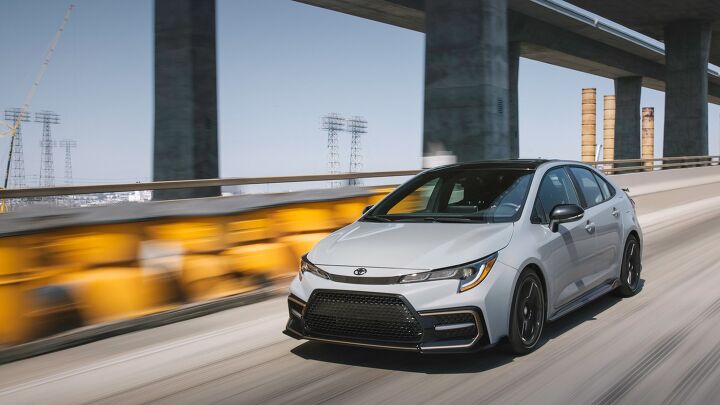

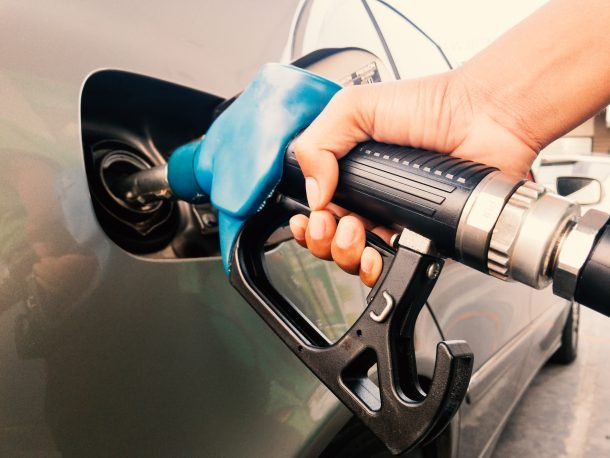






![Survey Suggests Americans Still Doubt EVs [UPDATED]](https://cdn-fastly.thetruthaboutcars.com/media/2022/07/19/9146893/new-york-to-ban-sale-of-gasoline-vehicles-after-2035.jpg?size=720x845&nocrop=1)




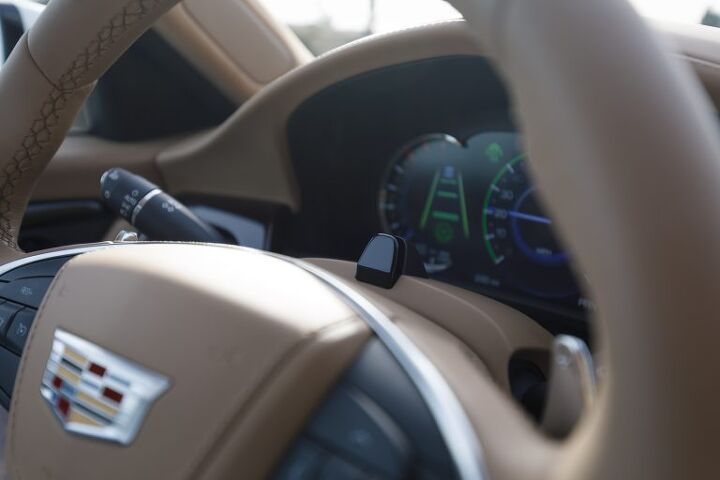







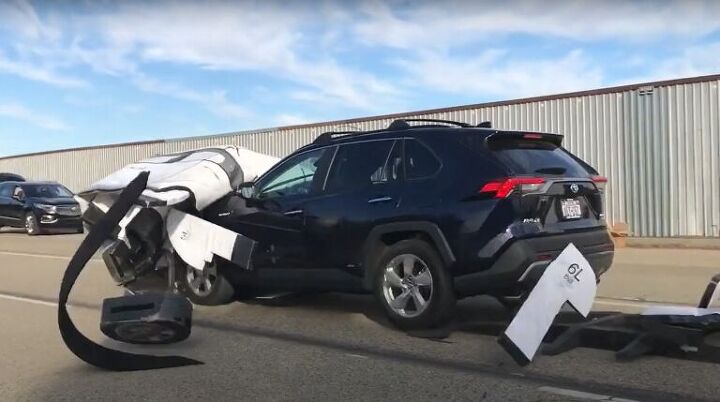

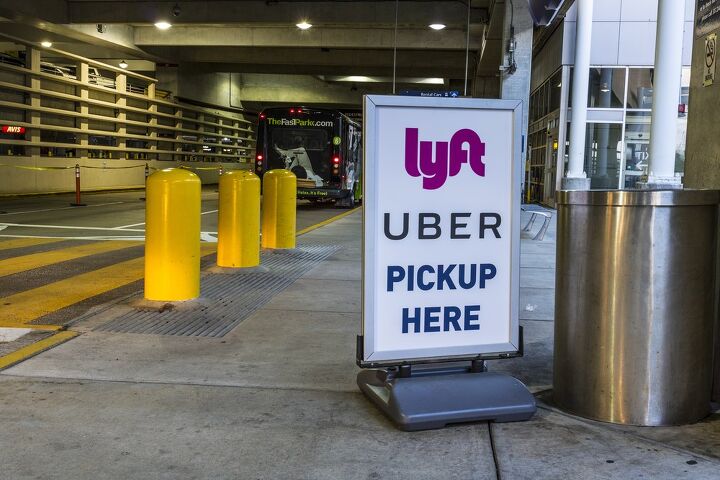















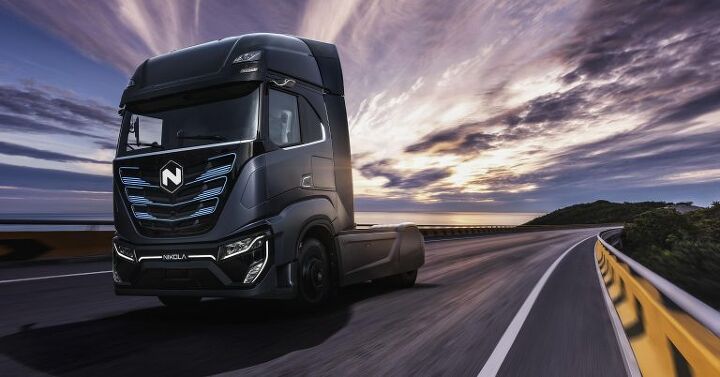







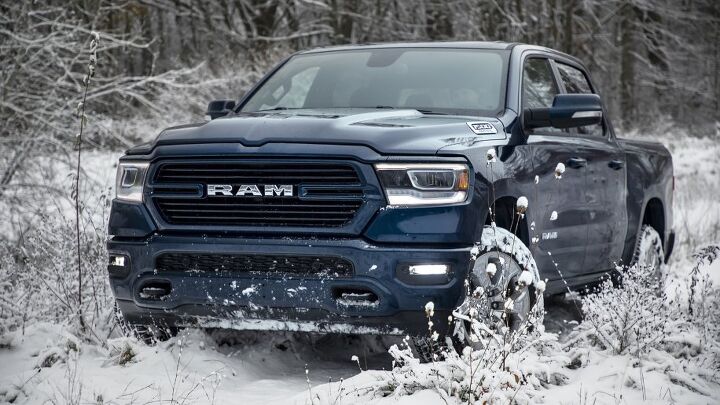
















Recent Comments